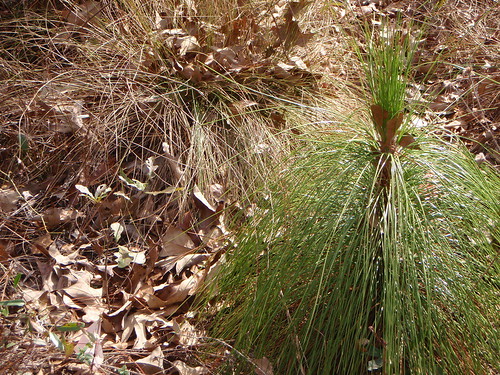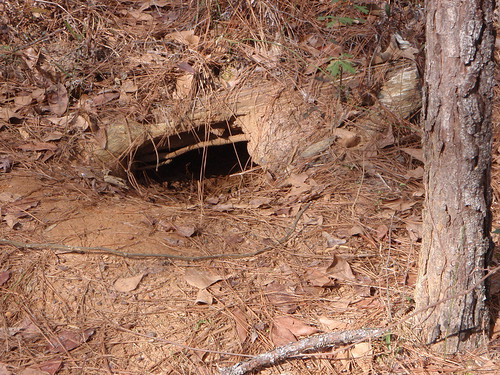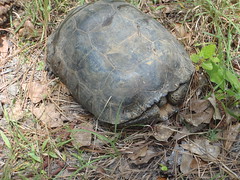About Longleaf (Pinus palustris), wiregrass (Aristida stricta), and gopher tortoise (Gopherus polyphemus) by the Longleaf Alliance:
We believe that longleaf in any form is better than a cotton field; that longleaf and native ground cover (like wiregrass) is better than longleaf alone; that longleaf, wiregrass, and gopher tortoises are better than longleaf and wiregrass alone.
Picture of Pinus palustris and Aristida stricta by John S. Quarterman, Lowndes County, Georgia, 19 February 2011.
-jsq


